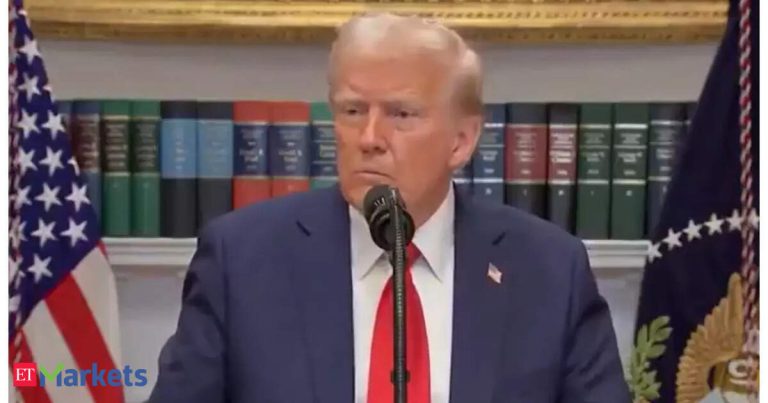As countries and companies across the world await the announcement by the US on levying reciprocal tariffs from April 2, a report by the Office of the US Trade Representative has flagged several tariff and non-tariff barriers that India levies on imports.
The 2025 National Trade Estimate (NTE) Report released by the USTR on March 31 highlighted that India’s average Most-Favored-Nation (MFN) applied tariff rate was 17% in 2023, which was the highest of any major world economy, with an average applied tariff rate of 13.5% for non-agricultural goods and 39% for agricultural goods.
The annual report, which evaluates trade policies of countries across the world and how they impact US exports, investments, and digital trade, has about 15 pages on India’s policies and has raised problems around data localisation, equalisation levy, laptop import policy, subsidies, a lack of transparency apart from tariffs. In all, it covers 59 countries including Australia, Bangaldesh, Canada, China and the EU apart from India.
“Most of the issues are repeat of the earlier reports. Few have been resolved and no longer relevant,” noted an analysis by Global Trade Research Initiative.
One of the key issues on tariffs that the US has raised is around India’s high import duties, especially on farm products. For example, India charges 150% on alcoholic drinks and 100% on walnuts and raisins. The US says that this makes it hard for their goods to compete.
“India maintains various forms of non-tariff barriers: banned or prohibited items that are denied entry into India (example, tallow, fat, and oils of animal origin); items that require a non-automatic import license (example, certain livestock products, pharmaceuticals, certain chemicals, certain information technology products); and items that are importable only by government trading monopolies and are subject to cabinet approval regarding import timing and quantity (example, corn under a tariff-rate quota),” it noted.
It has also highlighted issues around restrictions on foreign direct investment in retail commerce and banking as well as barriers and an uneven playing field for insurance companies by giving a sovereign guarantee for policies given by the Life Insurance Corporation of India. The report has also flagged internet shutdowns in India noting that they are disruptive to US services and the digital economy.
The report is also significant as India and the US are working on a bilateral trade agreement and hope to complete the first tranche by fall 2025. While it is expected that tariff related issues may be taken up in the first tranche of the trade pact, several non-tariff barriers may be taken up in later talks.
“While the US continues to pressure India to amend its trade policies to serve American commercial interests, India must firmly assess each demand through the lens of its own national priorities, development goals, and cultural values. Many of the proposed changes—in areas like agriculture, digital governance, and public health—pose serious risks to India’s ability to protect its small farmers, maintain food safety, uphold deeply rooted social norms, and secure its digital future,” noted the GTRI report.
A report by PwC noted that the evolving US trade policies, including tariff realignments and other measures, require Indian businesses to develop a long-term resilience strategy. The IDEA Framework – Invest, Diversify, Express, and stay Aware – provides a structured approach to navigate trade uncertainties and leverage emerging opportunities, it advocated.








